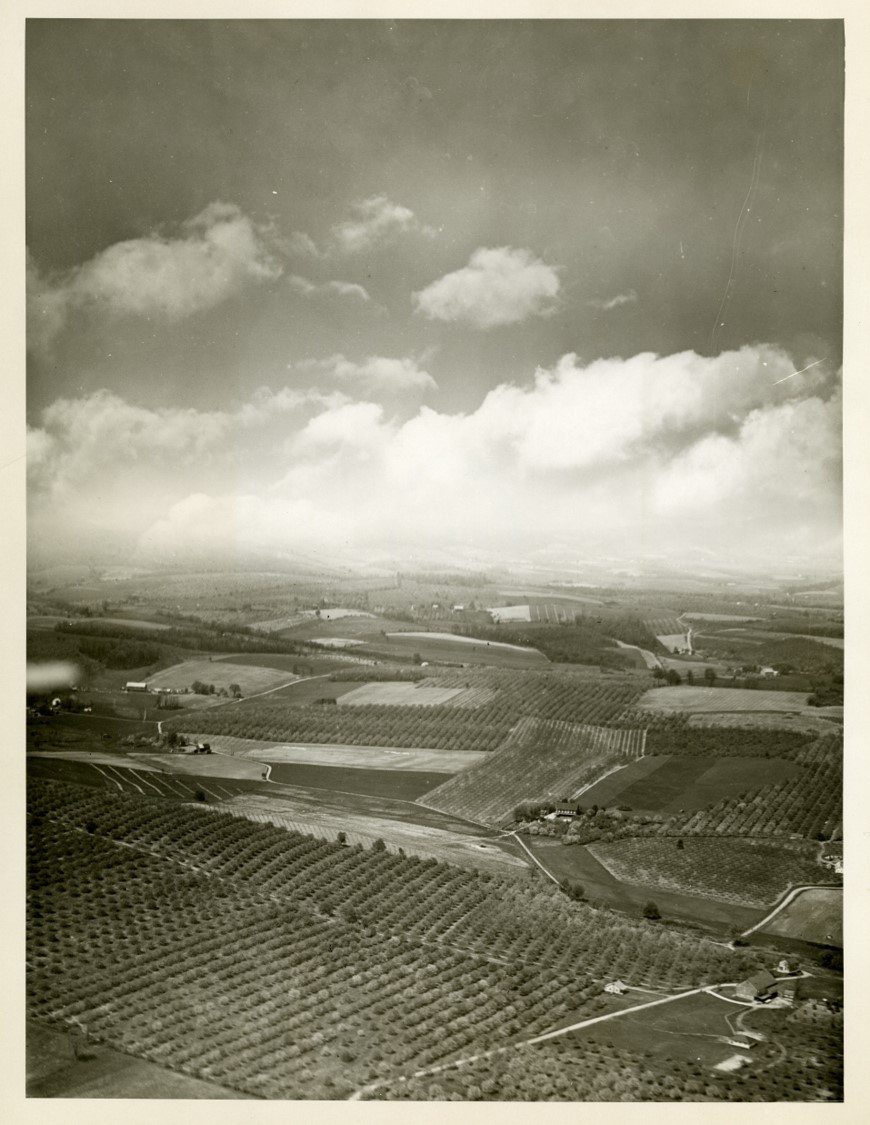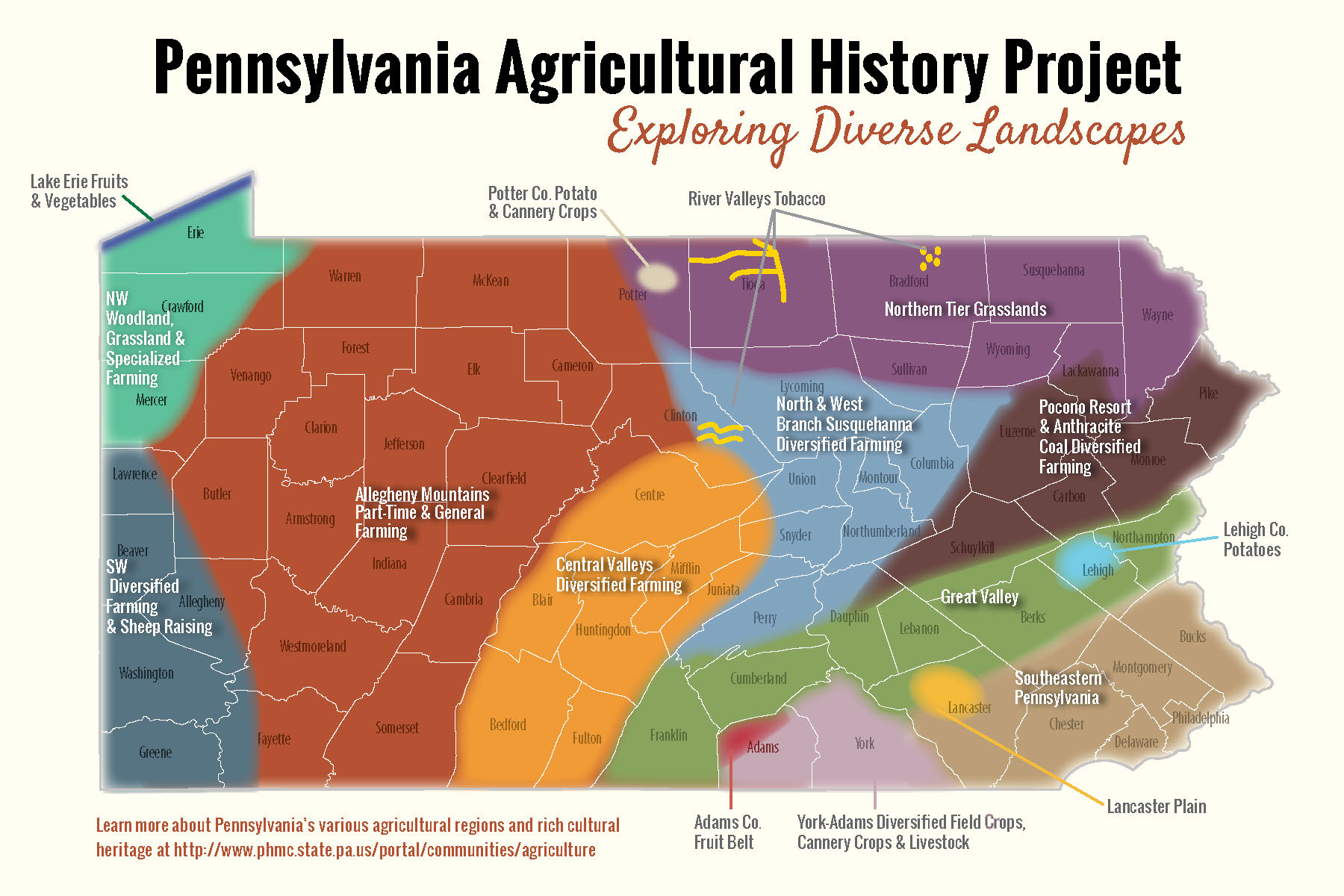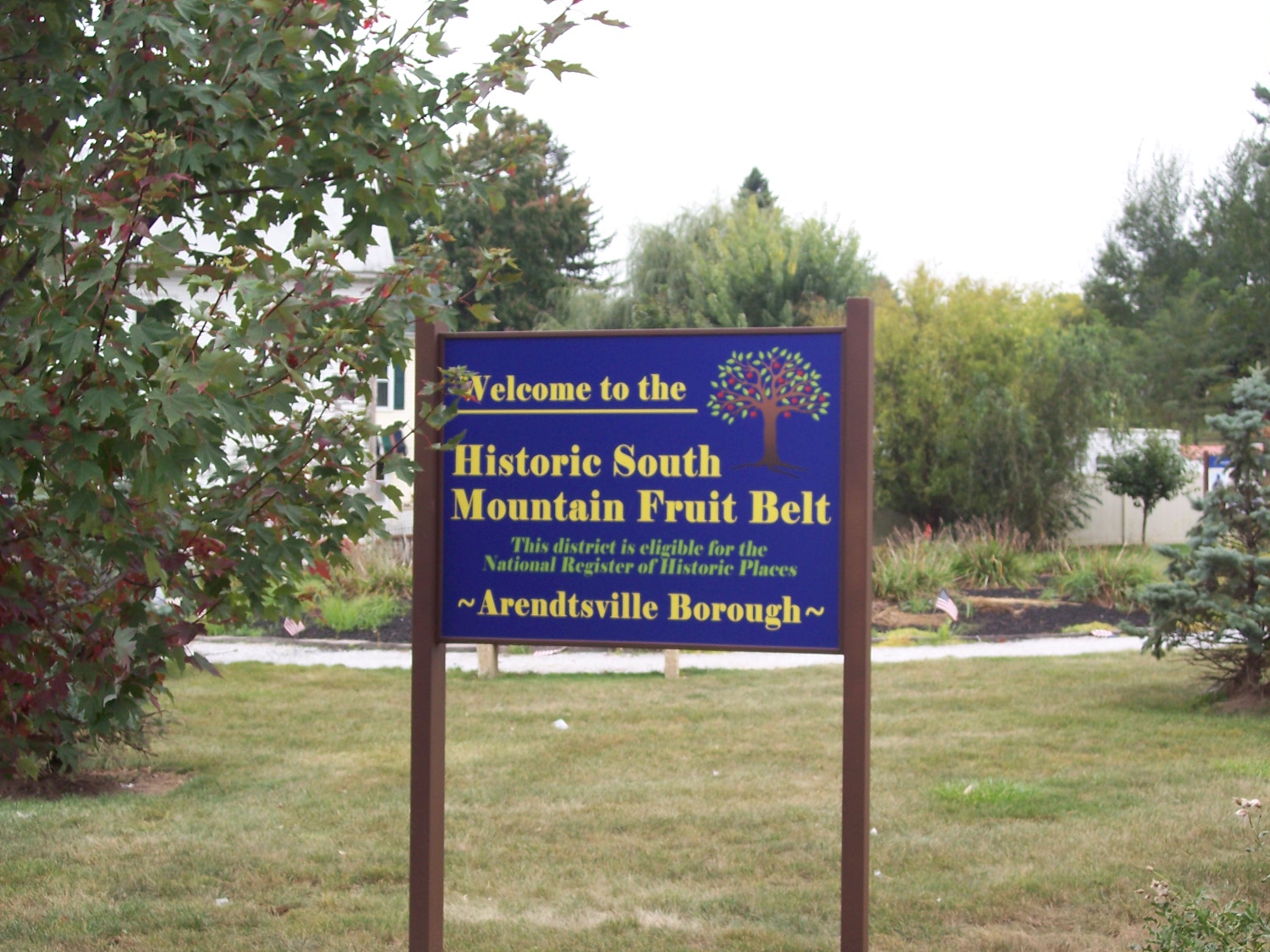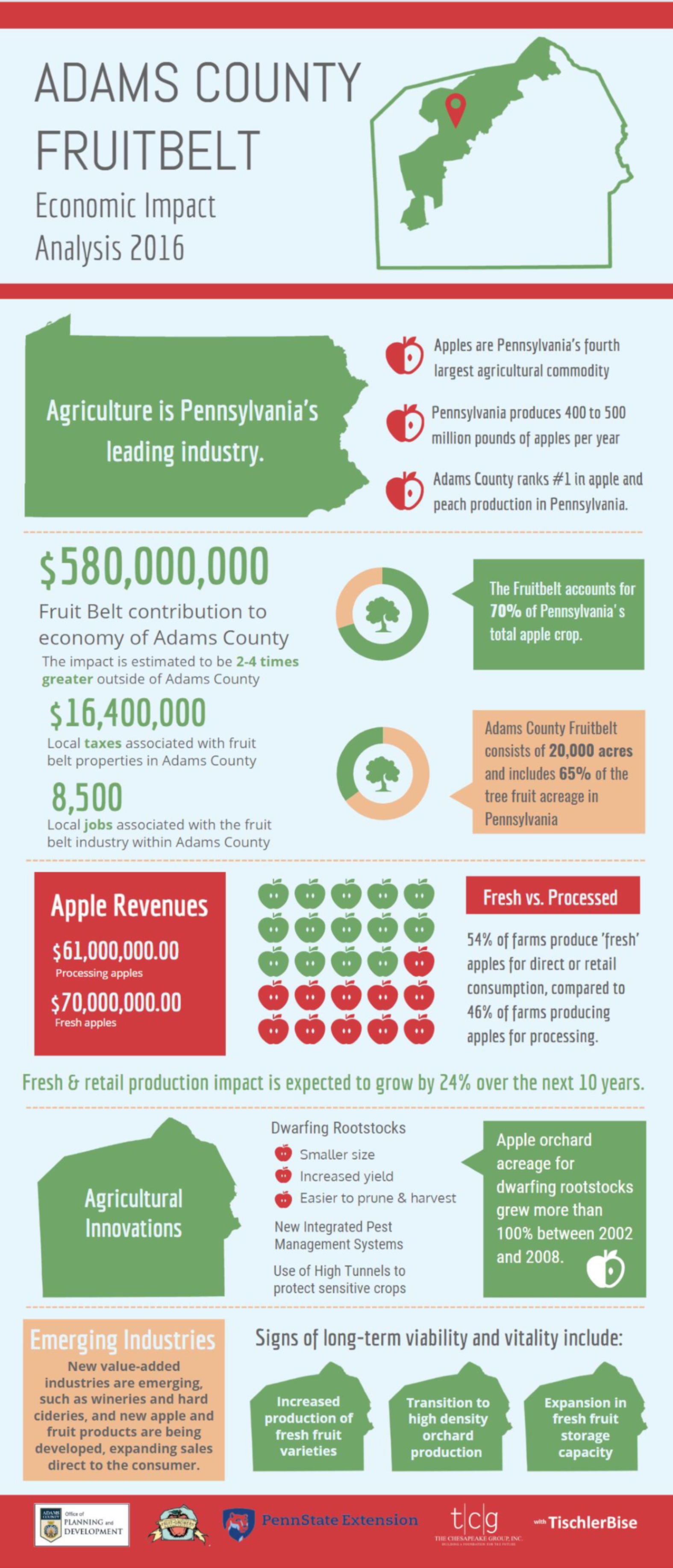Beginning in the early 19th century, and becoming more widespread in the years following the Civil War, fruit orchards of one type or another have dotted the South Mountain landscape in northwestern Adams County. Today, Adams County is home to the largest fruit growing industry in Pennsylvania.

Apple orchards in bloom in the Adams County Fruit Belt, by Samuel Kuhnert in 1929. Image from PA State Archives, Manuscript Group 281.
South Mountain, the northern terminus of the Blue Ridge Mountains, contributes to this distinct region, providing the perfect microclimate and fertile well-drained soils which support over 20,000 cultivated acres of various fruits. Chester J. Tyson, an Adams County fruit grower in 1906, noted that “for many years it has been known that this section was well suited to the growing of fruits, particularly apples,” and that South Mountain was a region “whose spurs and foot-hills break the adjoining county into numerous valleys with their well-drained, fertile slopes.”
The South Mountain Fruit Belt’s long history has been well documented by the PHMC’s Pennsylvania Agricultural History Project, and associated “Adams County Fruit Belt, c. 1875-1960” historic agricultural context.

The Adams County Fruit Belt, near the bottom of the map, is one of Pennsylvania’s many diverse agricultural landscapes.
Apples are and have long been “King” here, but the region is also home to various wineries. Value added products, in the form of craft hard cider production are gaining popularity and may offer Adams County the opportunity to also become the “Hard Cider Capital of Pennsylvania.” The fruit processing industry has always been the major employer in the county, and continues to grow with national and international sales.
In 1999, Adams County became the epicenter in a battle to eradicate the first case of Plum Pox virus identified in North America. This battleground extended to an area 300 square miles in size, causing the removal of all stone fruits (peaches, plums, etc.) within its boundary. After 10 long years of an extensive sampling and laboratory analysis program, Adams County was declared free of the virus however, local officials began to scratch their heads and wonder what the ramifications would be if something similar was to strike the apple crop. How much of an impact would this have on the industry and the county as a whole?
Although we have always known that the Fruit Belt is a major economic asset to the county, we didn’t know the extent of that contribution and we wanted to find out. A group of stakeholders, including the Adams County Fruit Growers Association, Penn State Cooperative Extension and Adams County set out to quantify the value this industry brings to the region. We outlined the parameters of the assessment, to also include an analysis of the long-term stability of our fruit industry.

Looking across the Fruit Belt landscape today. Image courtesy of Adams County Planning Office.
In July 2014, Adams County secured Federal Community Development Block Grant funding of $30,000 and released the Request for Proposals for an economic assessment of the Fruit Belt. The goal of the assessment was to gain an accurate and credible report on all the direct, indirect and induced effects of the industry on Adams County’s economy. The Chesapeake Group was contracted by Adams County to conduct the assessment. Direct interviews were conducted with growers that provided primary data from more than 80% of the county’s fruit farms. Data was also received from processors and suppliers, leading to a very accurate picture of the overall contributions of the industry.
This assessment also included the total economic impact of agri-tourism efforts in the county. Adams County is host to a number of historic apple related festivals that draw crowds from inside and outside of Pennsylvania. The National Apple Harvest Festival has sometimes exceeded 100,000 visitors in two weekends.
Destination Gettysburg, the premier tourism marketing arm in Adams County, has recently added experiential tours of local wineries, farm markets and cideries to their marketing of the National Battlefield and Gettysburg surrounds. The rolling hills, orchards and historic farmsteads of the fruit belt offer a bucolic historic and scenic landscape that is much the same as it has been for 150 years. The historic Round Barn and Farmers Market, located outside of Arendtsville, is a historic icon of the region’s rich agricultural past, and has become a model of the region’s growing agri-tourism industry.

Entrance to Arendtsville, one of the Fruit Belt’s historic communities.
And what did our assessment conclude? The Fruit Belt in Adams County contributes a conservative figure of $580 million annually to the county’s economy and supports 8500 – 9500 jobs. Its impact on Pennsylvania is two to four times greater. This industry is a very important economic engine for the county and the state. Although growers grapple with unsettling labor issues, the ongoing partnership with Penn State Extension is leading to better efficiencies and reduced costs. Our consultant concluded that the long established fruit industry is extremely viable and is growing, and barring any unforeseen catastrophe, will be here well into the future.
So now that our assessment is completed we have asked ourselves, where do we go from here? Some of the important aspects of our fruit belt mentioned previously are its topography and soils. We cannot just uproot it and move it to another location in the county and expect the same results.
Development pressures are threatening the Fruit Belt’s unique landscape character and heritage. Collaborative efforts are emerging that focus on preserving the working landscape, sustaining the Fruit Belt’s economic viability, and enriching the local sense of place for the region’s citizens. The South Mountain Fruit Belt needs to be protected through implementation of sound land use planning policies; this process is underway in discussions with local municipalities.
Increased marketing efforts are also needed to bring awareness to the superior taste of Adams County apples made possible by the distinctive soils of the Fruit Belt that add to the high quality of this region’s terroir. Chances are you have tasted our products as they are served all across the United States and internationally. Yes indeed, we are “America’s Orchard.”

Snapshot of the Fruit Belt economic assessment results.
This week’s guest contributor is Bicky Redman, Senior Planner for Environmental Services with the Adams County Planning and Development Office.
This was a very informative article. I’m trying to learn what I can about the fruit belt and preservation in South Mountain. Can you tell me where the view of the landscape was photographed? I want to be sure I drive by there on my next visit.